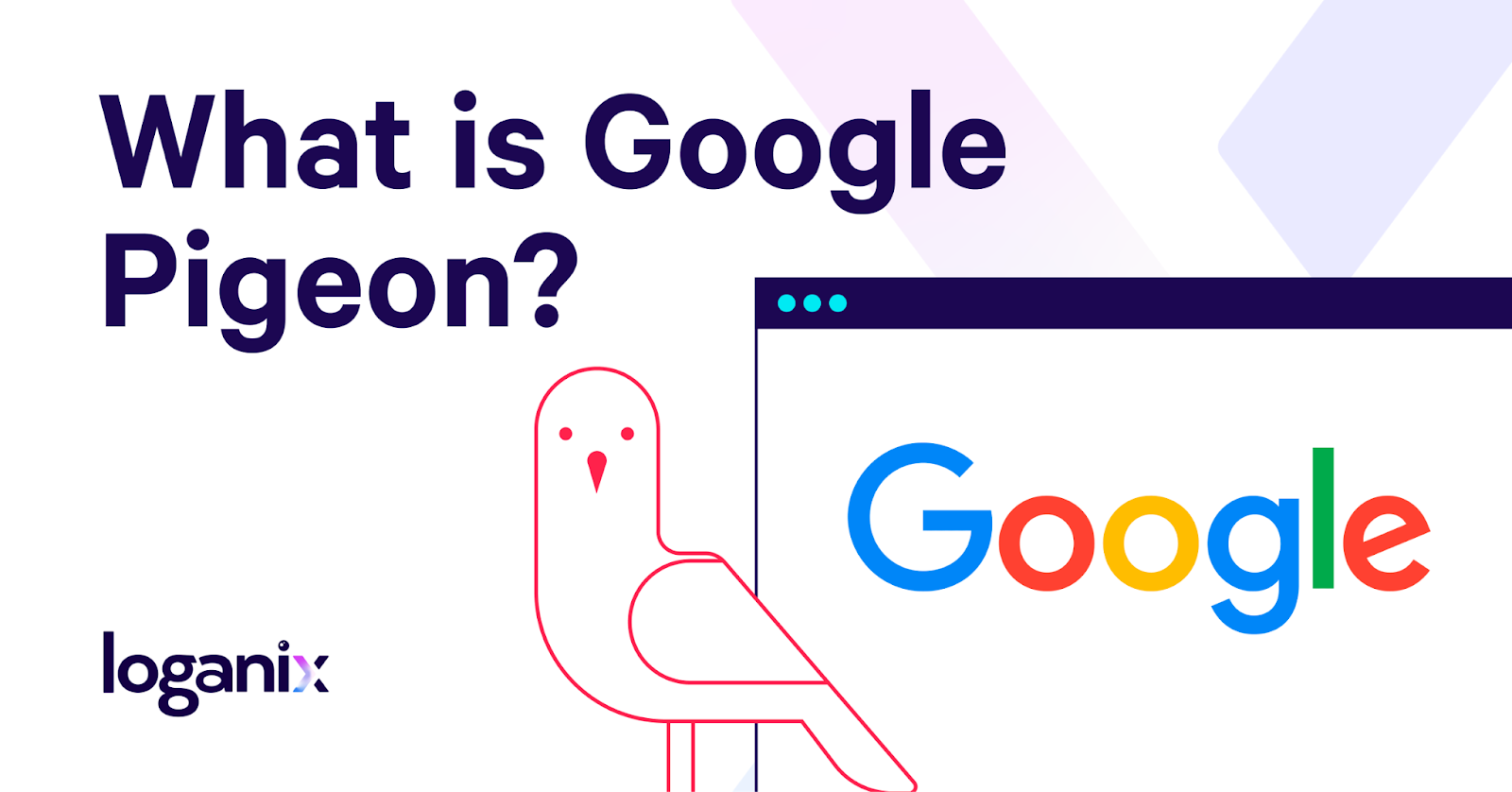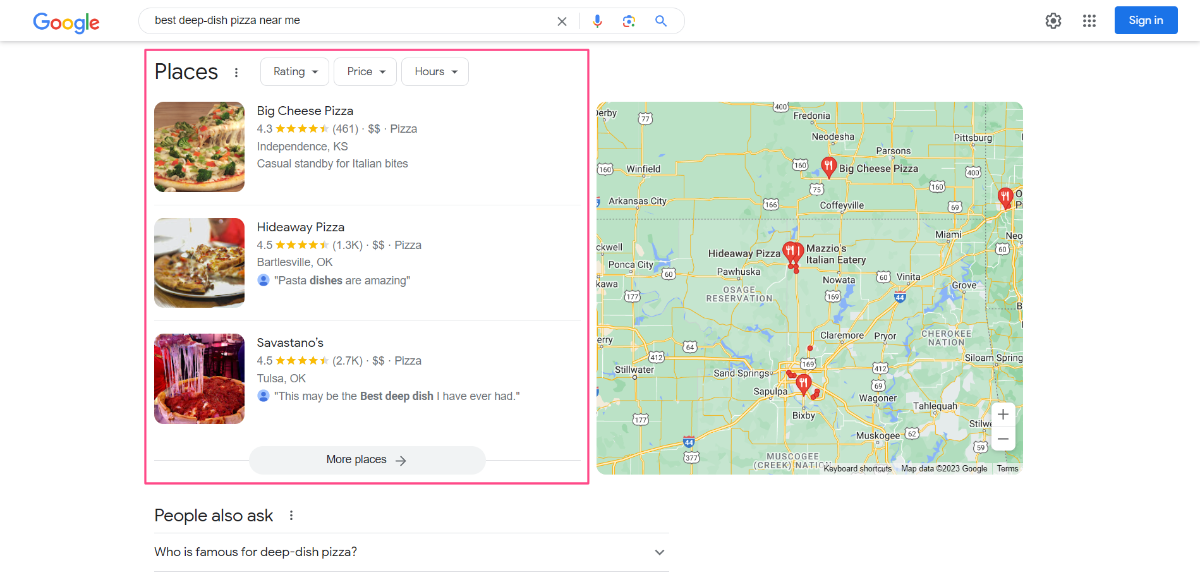What is Google Pigeon? Google’s Local Search Result Algorithm

Hand off the toughest tasks in SEO, PPC, and content without compromising quality
Explore ServicesJuly 24th, 2014, marked a serious change for the Google search engine results pages (SERPs). Dubbed Pigeon, the release of a new local search algorithm update ushered in a new era for local businesses, reshaping how they rank on the search engine.
The Pigeon update blended organic and local search factors, ensuring users received results that were not only relevant but also geographically accurate.
But what is Google Pigeon? To get you up to speed, by the end of this guide, you’ll
- understand exactly what the Google Pigeon algorithm update is,
- have a firm grasp on its implications for search engine optimization (SEO),
- and know how it has reshaped the landscape of local search forever.
What Is Google Pigeon?
The primary idea behind the Google Pigeon update was to provide contextually and geographically relevant search results to user search queries. The name “Pigeon” was aptly chosen for this update because, much like pigeons with an uncanny ability to find their way home, the Pigeon algorithm was all about honing in on local relevancy

So, why did Google feel like the release of the Google Pigeon algorithm was needed? As technologies improved, users became more accustomed to personalized experiences, prompting Google to refine its local search capabilities to meet these evolving expectations and ensure users receive the most accurate and relevant local information possible.
Learn more: Interested in broadening your SEO knowledge even further? Check out our SEO glossary, where we’ve explained over 250+ terms.
What Does Google Pigeon Do?
So, how exactly do the Google Pigeon algorithm capabilities deliver local search results relevant to user queries? Let’s take a look.
Integration with Organic Search Signals
The Pigeon algorithm doesn’t work in isolation. Instead, it fits right in alongside Google’s core organic search ranking signals. This means that factors like backlinks, content quality, website loading speed, and mobile friendliness are still at the forefront of how Google determines local search rankings.
Enhanced Location and Distance Factors
One of the standout features of Google Pigeon is its strong focus on location and distance. For instance, if a user searches for “bookstores near me,” the Pigeon algorithm will prioritize local results and show bookstores that are closest to the user’s current location.
Understanding Search Intent
Beyond distance and organic signals, the Pigeon algorithm is an expert at interpreting search intent—something known as semantic search. In the context of local search, Pigeon analyzes the nuances of user queries to deliver results that match the literal words and align with the searcher’s underlying intention or need.
Real-World Example 👉
Let’s play semantic search and the Google Pigeon algorithm out in the real world.
Imagine Sarah, a digital nomad, visiting Chicago for the first time. She needs to find a quiet space to answer a few emails and participate in a Zoom meeting. Before the Pigeon update, if Sarah Google searched for “best places to work remotely near me,” the Google SERP might have returned search results for popular co-working spaces across the US, with a few Chicago options sprinkled in—not particularly helpful for her needs.
Post-Pigeon, though, when Sarah conducts the same search, Google’s refined local search capabilities prioritize remote work-friendly cafes and co-working spaces with strong WiFi and quiet atmospheres, emphasizing those local businesses closest to her current location.
This example highlights the importance of the Pigeon update in delivering precise local search results, bridging the gap between users and the local services they seek.
Why Is Google Pigeon Important?
Let’s break down why Google Pigeon is so important for local businesses, content creators, and digital marketing as a whole.
A Unified Web and Maps Search Experience
Before the Google Pigeon update, there was a noticeable and often frustrating disparity between search results on Google’s web search and those on Google Maps. However, once Pigeon was rolled out, the two platforms became more synchronized and consistent.
So, when users like Sarah conducted a local search on Google’s search engine, the results closely mirrored what would be found if they used Google Maps.
The Transition from 7-Pack to 3-Pack

One of the most tangible changes that occurred after the Google Pigeon update was released was the reduction of local business listings that appeared in the Google Places results. Pre-Pigeon users would see a “7-pack” of local businesses related to their query. However, post-Pigeon, this was streamlined to a “3-pack”, displaying only the top three most relevant local businesses.
A change that made the competition even fiercer for local businesses, as only the top three would get prime visibility, underscoring the need for effective local SEO strategies.
Amplified Focus on Local Rankings
While Google has always valued local relevancy, the Pigeon update took this to a whole new level. The algorithm placed an even greater emphasis on local rankings, ensuring that local businesses that were genuinely relevant to a user’s location and query would be prioritized on the SERPs. An effect shook things up considerably. Even if a business had a strong global online presence and were seen as an authoritative voice in a given niche, it wouldn’t necessarily dominate local search results unless it was relevant to a searcher’s locale.
FAQ
Q1: How Does the Google Pigeon Update Differ From Other Google Algorithm Updates?
While other Google algorithm updates, such as Google Penguin, focused on backlink profiles and Google Hummingbird emphasized content relevance, the Pigeon update targeted local search results. It improved the accuracy and relevance of local search queries by integrating Google Web search and Maps search, emphasizing local ranking factors, and refining the display of local business listings.
Q2: How Can Businesses Remain Competitive in Local Search Post-Pigeon?
Post-Pigeon, businesses need to prioritize local SEO strategies, including their Google Business Profile (formerly Google My Business) listing is accurate and optimized, gathering positive customer reviews, and creating high-quality, locally relevant content. What’s more, businesses should focus on building strong local backlinks and ensuring their website is mobile-friendly, as many local searches come from mobile devices.
Q3: How Did Businesses Identify If They Were Affected by the Google Pigeon Update?
Businesses gauged the impact of the Google Pigeon update by monitoring sudden shifts in local search traffic and rankings. Using tools like Google Analytics or Google Search Console, they observed changes in website visits from local search queries. Additionally, they tracked their positions in local search results, especially in Google Maps. Significant fluctuations post-update indicated Pigeon’s influence.
Conclusion and Next Steps
Whether you’re looking to optimize your local search presence, build a robust backlink profile, or craft content that resonates with your audience, our team of experts here at Loganix will guide you every step of the way.
Don’t Wait! Every moment you’re not optimized, you miss out on potential customers.
🚀 Let’s elevate your business together with our suite of local SEO services. 🚀
Hand off the toughest tasks in SEO, PPC, and content without compromising quality
Explore ServicesWritten by Brody Hall on December 5, 2023
Content Marketer and Writer at Loganix. Deeply passionate about creating and curating content that truly resonates with our audience. Always striving to deliver powerful insights that both empower and educate. Flying the Loganix flag high from Down Under on the Sunshine Coast, Australia.





